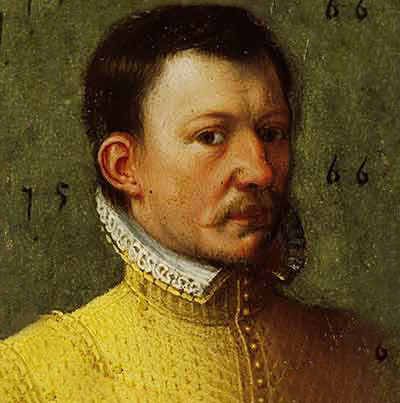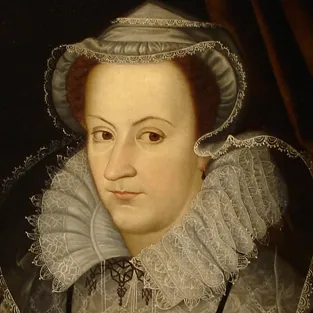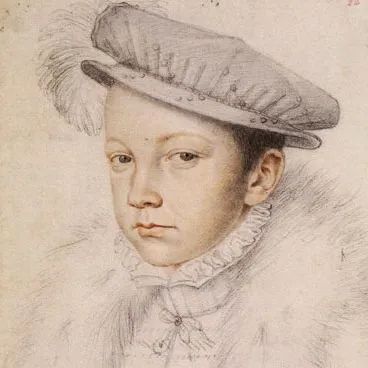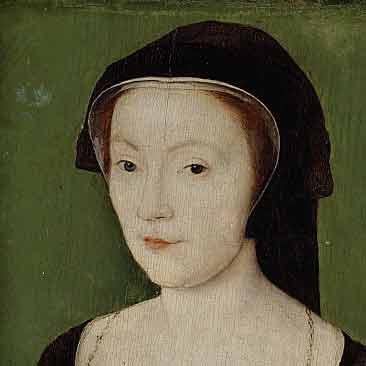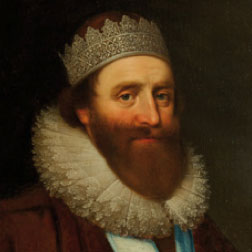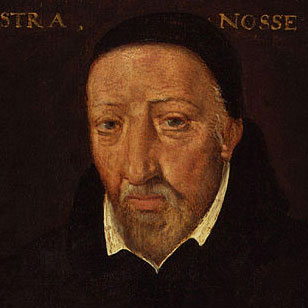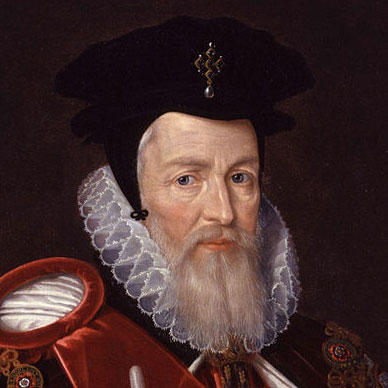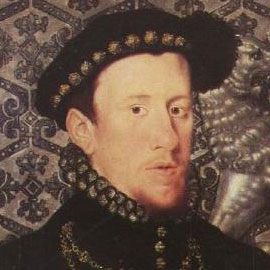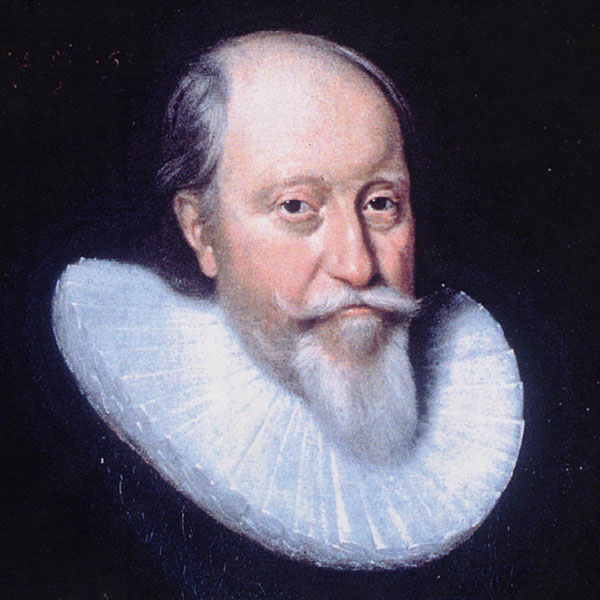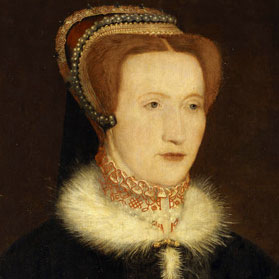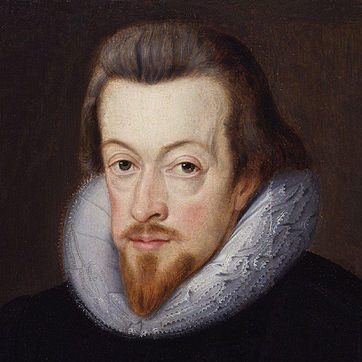James Hepburn, 4th Earl of Bothwell was a ladies’ man, powerfully attractive to women; he had a string of mistresses, and was noted as an able and swash-buckling soldier. He was a person of strong language and sexual appetite, although by repute he was not averse to homosexual relationships and enjoyed anal sex. He was well-educated at Spynie under his promiscuous kinsman, Patrick Hepburn, Bishop of Moray, but later attended university in Paris, where he became fluent in French. He studied Latin and Greek, but his principal interests were mathematics, military strategy and chivalry. Unlike his father, he was a Reformer, perhaps because Knox’s family had been Hepburn dependents.
The Earls of Bothwell were the hereditary Lord High Admirals of Scotland allowing them to claim treasure trove on all wrecks foundering on the Scottish coast, a valuable source of revenue. They were also hereditary keepers of Liddesdale and, from their stronghold at Hermitage, held sway over the eastern Border region on behalf of the Scottish Crown. Both roles caused them mistrust with the English. James was the son of Patrick Hepburn, 3rd Earl of Bothwell and Agnes Sinclair. His parents had divorced, after Patrick had ambitions to marry Marie of Guise, although she turned him down. Yet he remained unfailingly loyal to her, as was his son, who also supported her daughter, Mary Queen of Scots.
When Marie of Guise faced increasingly hostility from the Presbyterians, Bothwell (the 4th Earl) hijacked a delivery of £3,000 sent to their aid by the English. This caused him lasting antagonism from Lord James Stewart (later Earl of Moray). She later sent him to France in an attempt to gain reinforcements, but he heard of her death when he reached Denmark. He now delayed his journey enjoying an affair with Anna Throndssen, the daughter of an admiral in the Danish navy, with whom he had gone through a hand-fasting (betrothal) to allow them to have sex. When he eventually reached Paris, he was described by Throckmorton, who he met in Orléans, as ‘a [vain]glorious rash and hazardous young man’. He was made a Gentleman of the Bedchamber by Francis II, and, perhaps more importantly, received a generous fee of six hundred crowns to restore his finances. He had a vitality that Mary respected and, before he returned to Flanders, was appointed a Commissioner for her Estates. Anna[1] returned to Scotland with him on 17 November 1560, but he unceremoniously dumped her, despite her being pregnant. To avoid the Lords of the Congregation, he now travelled between Scotland and France and, as Lord High Admiral, came to Calais to transport Mary’s baggage back to Scotland.
Lord James Stewart wanted Bothwell out of the way and had him imprisoned in Edinburgh Castle on trumped up treason charges. While he was in the north with Mary to deal with a rebellion by the Earl of Huntly, Bothwell escaped. Although John Knox interceded on his behalf, he was forced to leave Scotland. When his ship was wrecked on the Northumbrian coast, the English placed him in the Tower of London, where he remained until 1564. Although he was released at Mary’s request, he was required to go to France. In February 1565 after a year on the Continent, he petitioned Mary to be allowed home. Randolph reported: “Of herself, she is not evil affected towards him, but there are many causes why he is not so looked upon as some others are.” He did not wait for a reply, but arriving in Scotland a month later. Having gone to Hermitage Castle, he sent his chamberlain to plead his cause. Mary declared that she could not hate him, even though Moray felt exposed and planned his arrest and attainder.
Bothwell kept on the move to prevent Moray catching up with him. Randolph, the English Ambassador, who shared Moray’s dislike for him, reported that he ‘followeth the matter so earnestly that Scotland shall not hold them both’. Mary agreed to him facing charges for escaping from Edinburgh Castle, but wanted to avoid a treason trial, and insisted on bail. Although the case was set for 2 May, Moray positioned about 6,000 armed men in Edinburgh, and Bothwell did not dare to appear. Despite being ably defended, he was found guilty of treason by the jury. Yet Mary thought he could still be useful, and allowed him to return to France without forfeiting his estates. In return, Bothwell support Mary’s marriage to Darnley. Ten days’ beforehand, she recalled him from France.
Mary gave Bothwell a great welcome. On 28 September 1565, he was reappointed to the Privy Council and restored as Lieutenant-General of the Borders, using his base at Hermitage Castle to re-establish himself with the Border lairds, bringing many of them into Mary’s camp. When Moray took up arms against her in the ‘Chaseabout Raid’, he took command of her forces, forcing Moray into exile in England. Yet he remained disliked by his peer group, but became closely associated with the 5th Earl of Huntly. On Mary’s advice, he married his sister, Jean Gordon, although they were never happy together. In May 1566, while on a visit to Haddington, he had a fifteen minute liaison in the steeple of the Abbey with his wife’s serving maid. As Sir John Maxwell (later Herries) explained, even Mary was not immune from his charms:
He was high in his own conceit, proud, vicious and vainglorious above measure, who would attempt anything out of ambition. His reckless daring appealed to her romantic sentiments, while his strong character and resolute purpose contrasted forcibly with the weakness of her husband Darnley, and his inability to control or protect her.
Although Bothwell became a key member of Mary’s government, opposing Moray and Maitland’s reinstatement, he lacked their political finesse, and found Darnley’s Catholic posturing obnoxious. He was not involved in the conspiracy to murder Riccio, but assisted Mary in escaping with the wayward Darnley to Dunbar. He now became the most influential of her advisers, bringing her Government’s pro-Catholic leanings to an end. After James’s birth, he escorted Mary by sea to recuperate at Alloa with the Earl of Mar, but returned immediately to Edinburgh [2]. Yet he remained unpopular with Moray’s supporters by continuing to oppose the return of the Earl of Morton and the other conspirators involved in Riccio’s murder.
In the autumn, he travelled to Hermitage with three hundred horse to arrest a group of borderers for trial at Jedburgh, but was seriously wounded while attempting to arrest them. After Mary had travelled to Jedburgh for the assize, she visited him with her other advisers on his sick bed. On her return, she suffered an abdominal haemorrhage, which threatened her life. Bothwell recovered quickly and arrived at her bedside fearing the worst, but she slowly recovered and was able to return by easy stages towards Edinburgh. On reaching Craigmillar, she remained for a fortnight to convalesce, during which she approached her senior advisers to find a means of divorcing Darnley, who was continuing to be involved in Catholic plots to gain the throne. The lords signed a bond to help her, but it was soon apparent that a divorce could not be achieved without making her son, James, illegitimate. Without advising Mary, the Lords concluded that their best course was to have him murdered, and Bothwell, as the soldier among them, was given charge of the planning.
When Mary had recovered, she started to plan James’s lavish christening to take place at Stirling and Bothwell organised the arrangements. During the festivities every effort was made to persuade her to repatriate Morton and the other the exiles, and even Bothwell was supportive as he needed their assistance in undertaking Darnley’s murder. Meanwhile, Darnley, who was suffering from skin pustules caused by his syphilis, slipped off to join his father, the Earl of Lennox, in Glasgow. After Christmas, spent by Mary with a group of nobles including Bothwell, she travelled to Glasgow to persuade Darnley to return to Edinburgh, where she could nurse him and better control his scheming. Bothwell went to meet Morton, who had returned as far af Whittinghame, east of Edinburgh. Morton supported the murder plan, but was in no position to assist, as he was not permitted within ten miles of Edinburgh, but he agreed to send henchmen.
When Darnley returned with Mary to Edinburgh, he agreed to recuperate at Kirk o’ Field. Bothwell now planned the murder there, but was not present and spent the whole of the day beforehand with Mary. He was woken at Holyrood after the explosion and took responsibility for establishing what had happened. Yet the nobles hatched a devious plan to bring both him and the Queen down, thus allowing Moray to take control of Government. Having encouraged them to marry, they implied that they had been involved together in a crime of passion. They sowed rumours of this on placards in Edinburgh and later concocted evidence of their long running affair, when Mary was not involved in either the murder or an affair.
Although Bothwell was brought to trial, it was imperative that he was found innocent and no evidence was submitted. He then met with the nobles over dinner, during which they signed a bond to support the marriage. Maitland, who hated Bothwell, then went with him to Dunbar to persuade Mary. She was initially reluctant, but, after visiting James in Stirling, Bothwell kidnapped her as she was returning. They went back to Dunbar, where he persuaded her to agree to their marriage to protect her throne, and they had sex together. He needed a divorce from Jean Gordon, but, as soon as this was obtained, they married, and he was created Duke of Orkney.
The nobles immediately took up arms, mustering a dominant force. When Mary and Bothwell met them at Carberry Hill, Bothwell was permitted to escape (as they did not want his evidence to be used in a court case). Mary was arrested and, after being imprisoned without trial at Lochleven, was deposed. This allowed Moray to become Regent for James.
The story of Bothwell’s escape to Denmark is covered in detail in a separate blog post: What happened to the Duke of Orkney (Earl of Bothwell) after Carberry Hill?
[1] Anna Throndssen reappeared in Scotland in 1563 to seek recompense from Bothwell, but he does not appear to have assisted her although she was still alive in 1607. The Throndssen family claimed that she had married Bothwell, after their offer of a dowry of 40,000 silver dollars, but she never claimed to be the Countess of Bothwell and there is no record of the marriage. It has been suggested that his only known child, William, was Anna’s son and certainly Bothwell’s mother left her estate to him.
[2] It was not the beginning of a romance between them as Buchanan was later to allege.

